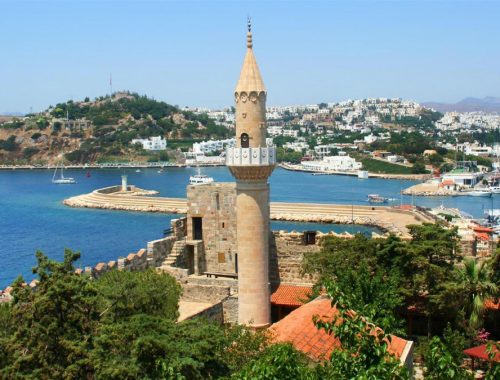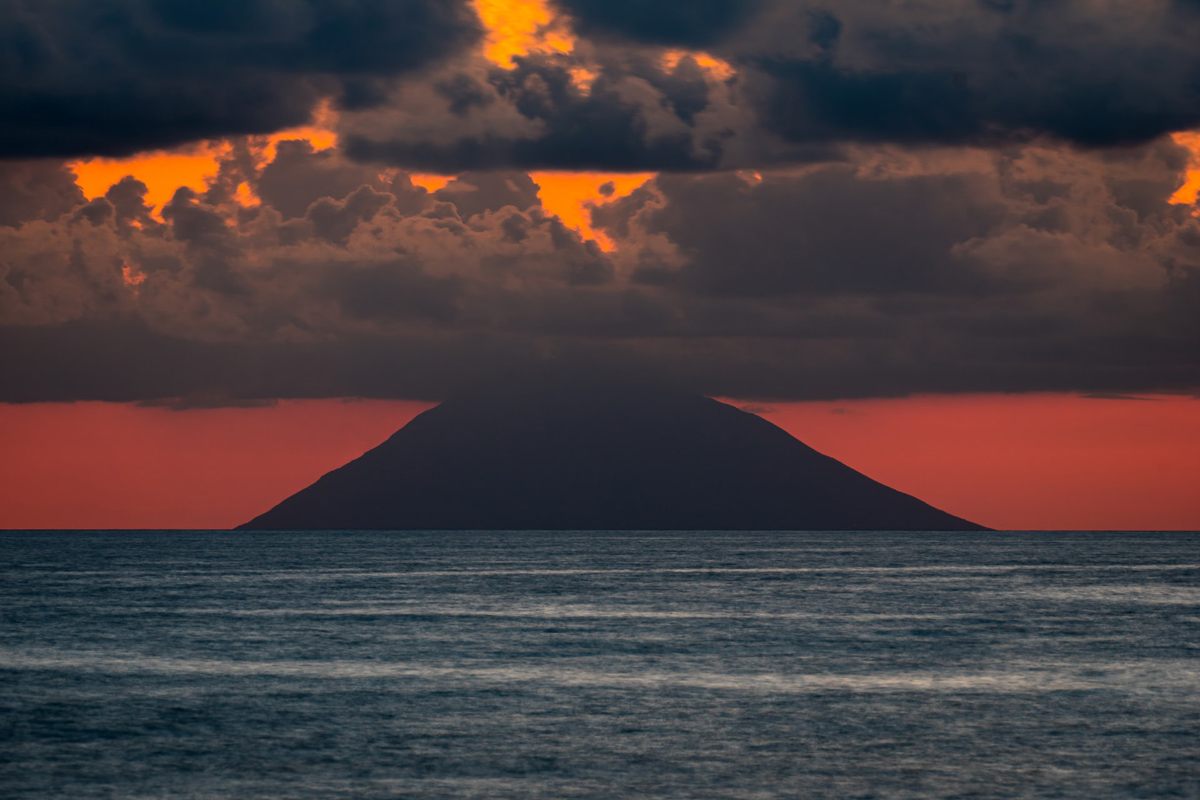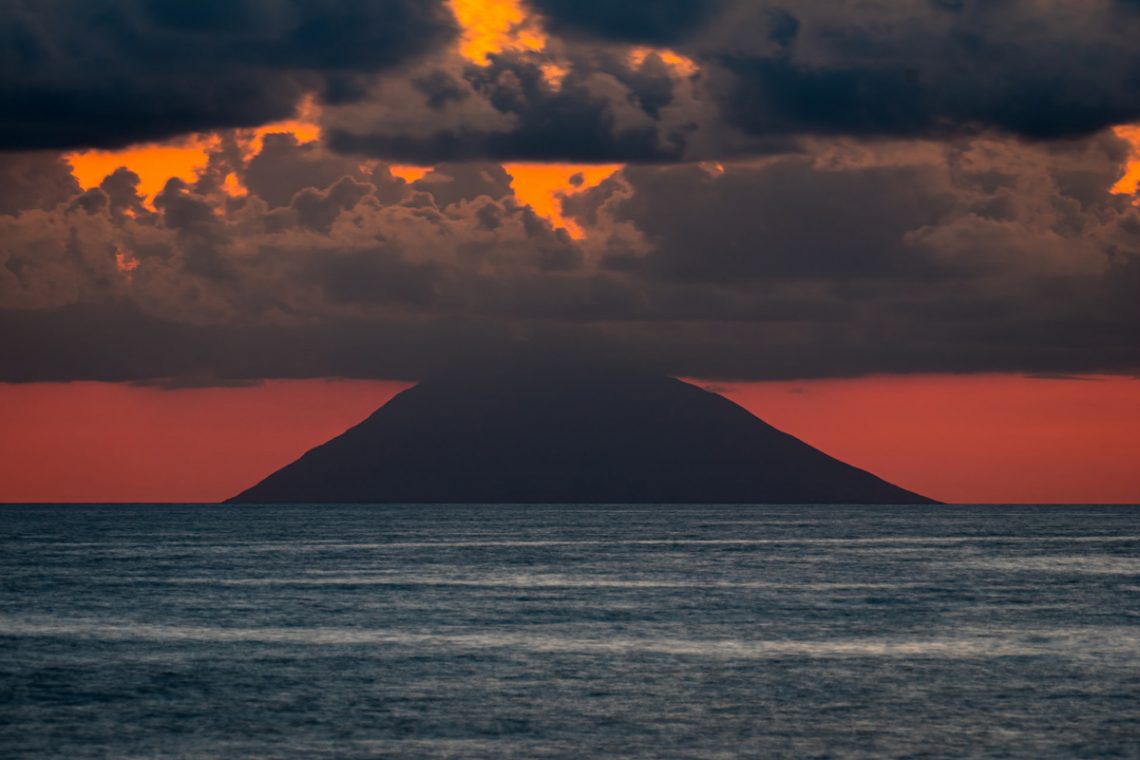
Aeolian Islands: a sailing cruise in the volcanic islands
The Aeolian islands, each one of them of an extraordinary beauty, seduce the sailsmen with their breathtaking scenery, the ancient volcanoes, the steep slopes and the black sands plunging into a bright blue sea. It is easy to fall in love with their mythological atmosphere, the primordial nature, the simple and warmhearted people and the fiery sunsets.
Discover the best boat rental offers on the Aeolian Islands
Day 1, Portorosa Marina (boarding)
Our itinerary starts from the Marina Portorosa which is about 14 miles away from the archipelago and represents an excelent embarkation point for our cruise. Usually the boarding time is at 5 pm and the first night is spent in port to relax and enjoy an excellent dinner with the rest of the crew.
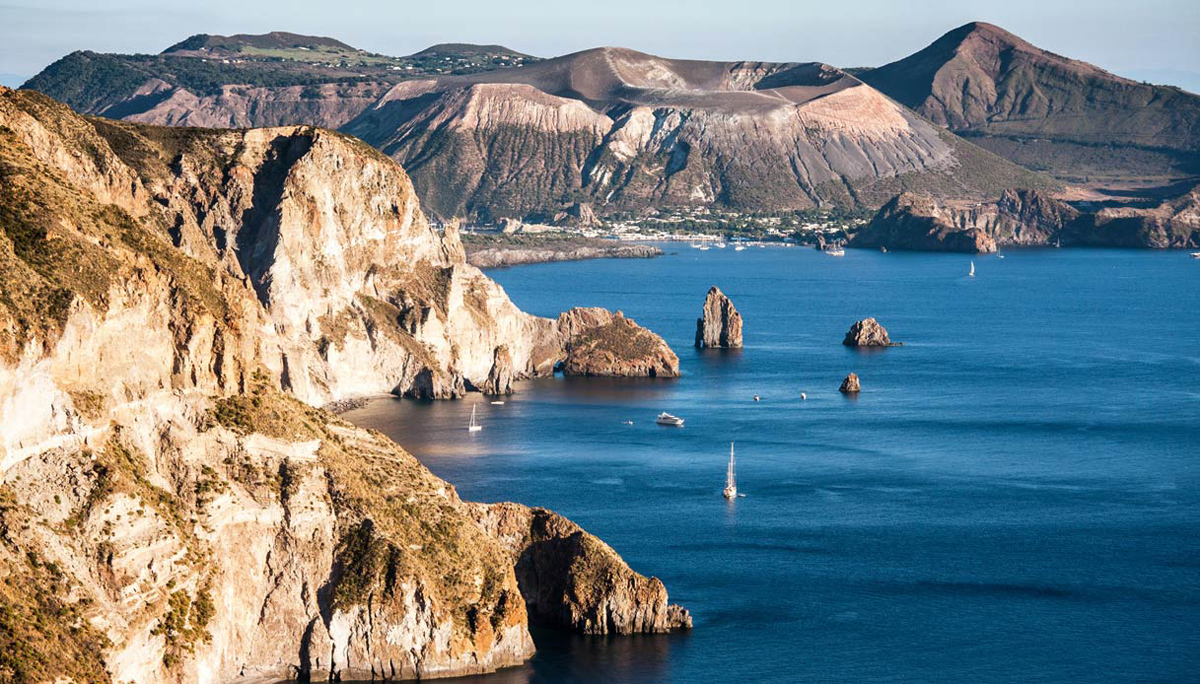
Day 2, Marina di Portorosa-Vulcano, 14 miles
It is now time to leave the mooring point for the first stage of our sailing trip: the splendid Volcano which with its primordial nature, the active volcano, the thermal springs and the many coves is a true jewel of the Mediterranean. A navigation of 2.5 hours is enough to reach the island and then the winds dictate the best stopover point. The Port of Ponente (il Porto di Ponente), located southwest of the Promontory Vulcanello, offers a beautiful place to anchor sheltered from winds from the North East, East-South East and South. It’s even possible to get closer to the bay if one keeps navigating in its center where the depth of the seabed is 12-15 meters, and then decreases towards the shore. From here it is possible to reach the fameous beach Sabbie Nere, the symbol of Vulcano, which ia the most beautiful at sunset with its fiery red shades. The road behind the beach leads to the village. When the wind blows from the West, South West and North West, the alternative spot to anchor is Porto di Levante in the eastern part of the isthmus that connects Vulcanello to Vulcano. Here you can moor at the quay dedicated to boaters, or use the floating docks with all the services or take advantage of the buoy field near the pier.
While exploring the coast, Cala del Formaggio is worth a visit, it’s a pretty bay with a small pebble beach and surrounded by rocky walls. Equally interesting are Cala di Mastro Minico and Cala di Capo Secco, an isolated bay of wild beauty, set between steep volcanic cliffs. Next from here to the north is Punta di Capo Secco where you can see the Grotta del Cavallo and the Piscine di Venere, two of the most exciting coastal points on the island. Other interesting stopover points are the Anchorage of Gelso, a bay with a beautiful black sand and gravel beach that overlooks a blue sea and then the Fumarole Beach, unique for its waters heated by sulfur vapors and underwater springs. Finally, the one of the most remembering experiences on the island is the climb to the Gran Cratere, better known as “Fossa di Vulcano”. The path that leads to the crater is quite challenging (7 km), but within everyone’s reach: consider doing it in the cooler hours of the day.
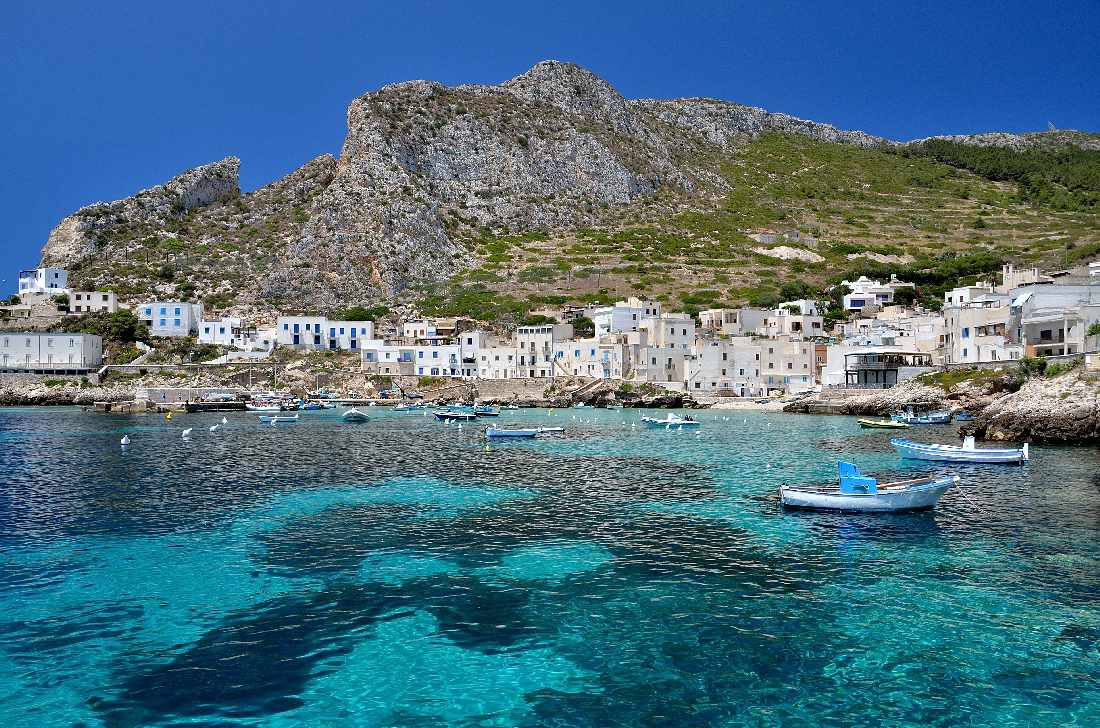
Day 3, Vulcano-Lipari, 3 miles
The following day we leave for Lipari, the largest island, but also the most populated one and best equipped of the whole archipelago which is just 3 miles away. We will moor in the Cugno Lungo Bay on the west coast near San Calogero. Lipari is an extremely pleasant and fascinating stopover settled on the sea with its historic center full of narrow streets that take you up to the castle built in the sixteenth century. The important Aeolian Archaeological Museum is also based here, next to the famous Cathedral of San Bartolomeo that has a facade styled in a late Baroque maner with its steep staircase and the remains of the Norman monastery of the Most Holy Savior (Santissimo Salvatore).
Also worth a visit are: the beautiful viewpoint Belvedere di Quattrocchi which offers one of the most exclusive views of the archipelago and also the secluded and genuine village of Acquacalda in the northern part of the island, or the hamlet of Canneto with its pretty promenade, great for long walks while enjoying a fresh granita (Italian-style flavored ice). Also a must see are the Pumice Quarries, a complex of buildings perched on Capo Rosso that was used for the extraction and processing of pumice – a very light and porous volcanic rock formed when a gas-rich froth of glassy lava solidifies rapidly. As for the beaches, the most beautiful ones here are: the Forbice, a beautiful bay with emerald-colored water just south of the town, the Sponda di Vinci where the two steep stacks of Pietralunga and Pietra Menalda stand out, and the long isolated and wild pebble beach of Valle Muria.
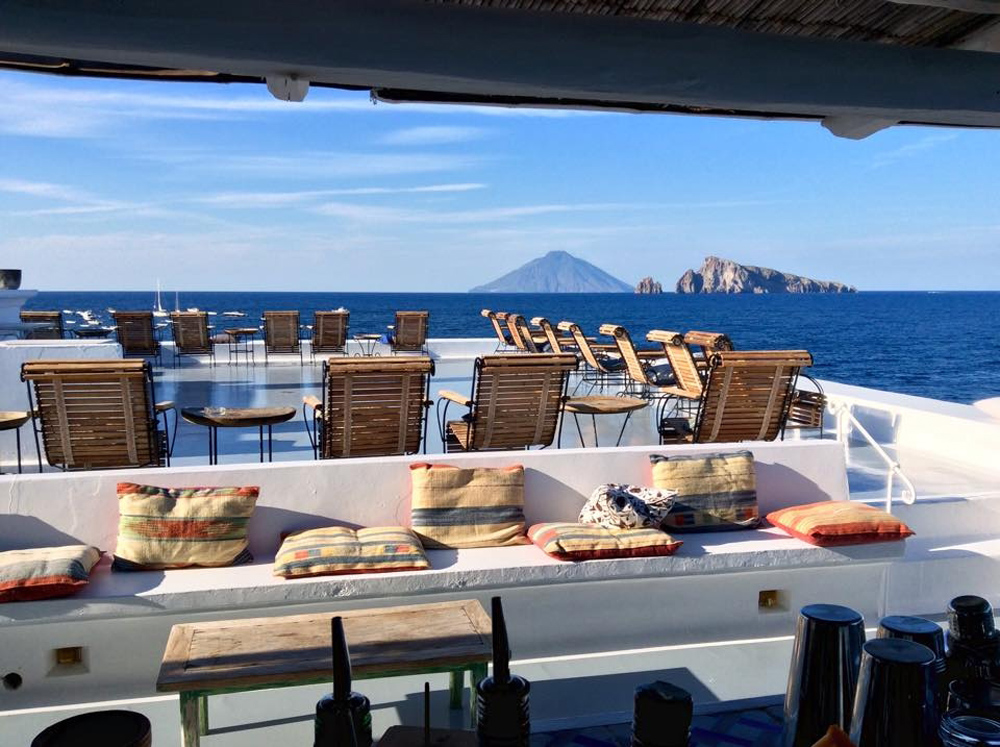
Day 4, Lipari-Panarea, 12 miles
Time to leave the place you anchored overnight at and continue the cruise to Panarea, the most frivolous of the seven islands. It’s not a coincidence that it is called the “Capri of the Aeolian Islands” for the beauty of its scenery, the whitewashed houses, the bougainvillea flowers, the chic atmosphere, the luxury hotels, the nightlife and the exclusive restaurants. It takes 2 hours to sail the 12 miles that separate it from Lipari. The coasts offer good shelters with winds from the West and North. The west coast descends into the sea with steep peaks, while the east side offers a gentler coast with bays and coves with good anchorages. Among all of them the best is Cala Milazzese, a safe shelter from the winds from North and West and an excellent seabed of sand and seaweed. Cala della Nave, located on the North West side, is recognized by the large rock 40 meters high in the shape of a ship, represents the only alternative for mooring if the winds are from the South. At the Ditella pier the docking is more inconvenient and complicated as here it is always overcrowded in summer and there are already scheduled stops for connections between Panarea and the other islands.
To the best possible way to start your tour of the island is to reach Punta del Corvo, its highest point (421 meters) and admire the island from above or get lost in its small, exclusive beaches overlooking the wonderful sea. One of the most beautiful is Cala Junco located at the southern coast of the island: a splendid natural swimming pool with turquoise waters surrounded by high rock walls that make it look like an amphitheater. Equally splendid is Cala degli Zimmari, a quiet bay framed by a cliff with lush vegetation and a cobalt blue sea. Calcara beach is also very popular, known for its fumaroles (an opening in or near a volcano, through which hot sulfurous gases emerge) and sulphurous colors with temperatures reaching 100 °C. Diving enthusiasts will appreciate the wreck of the English ship in Lisca Bianca where the Grotta degli Innamorati, which is also located here, and the densely populated seabed of Le Formiche.
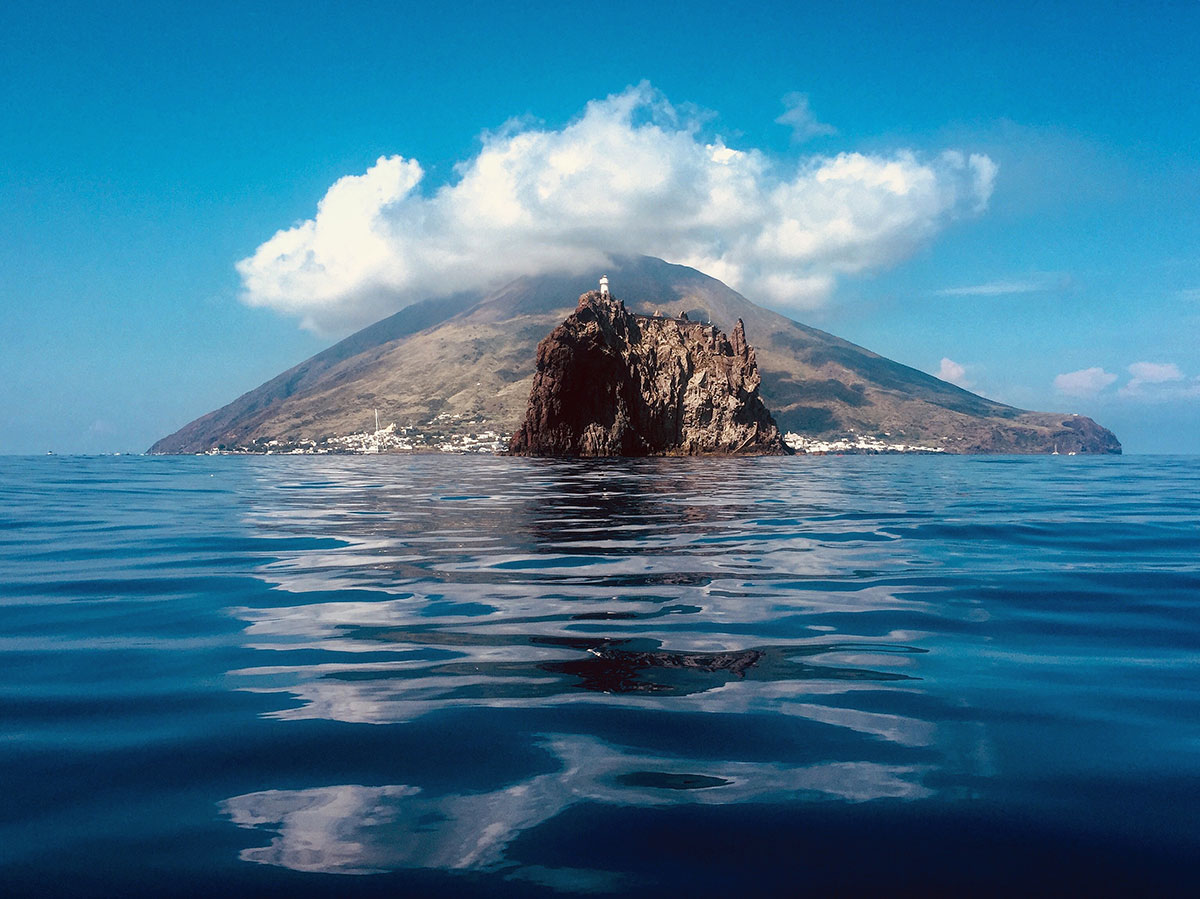
Day 5, Panarea-Stromboli, 13 miles
Stromboli awaits us on our fifth day, an island with a Mediterranean flavor, quiet and peaceful among the narrow alleys subordinated to the size of the volcano. The volcano, almost 1,000 meters high, is in permanent activity and gives boaters extraordinary emotions, such as the Sciara del Fuoco, magma channeled between two ridges, which, observed at night from the sea, leaves you breathless. After a couple of hours of navigation we reach the island, there is no much depth here which makes it impossible to anchor. The least uncomfortable approach is Cala Ficogrande or Scari, located west and east of Punta Lena. Both docks are used for the ferry and hydrofoil line service, but it is possible to stop for the night not far from them, using only the North West winds for speed. Alternatively, you can take advantage of the small cove of Ginostra located in front of the same named village: here you can drop the anchor in front of the houses, 80 meters from the ground, in 7-8 meters of water depth with a rocky bottom. Near Ginostra there is also the beach of Forgia Vecchia, not that crowded and delightful. Like all the beaches of the island, this one is also with black sand, volcanic rocks and crystal clear sea. Here there are also natural pools set among the rocks that can be reached by sea. Another beautiful beach is Piscità which is home to an old tower-shaped windmill and the renowned Grotta di Aeolo.
In the historical center of Stromboli the San Vincenzo squere stands out, it overlooks the sea and is known for its spectacular view of the renowned Strombolicchio, a volcanic islet which is the northest point of the entire Sicilian region. Also worth visiting is the Church of San Bartolomeo, dating back to 1801, as well as the house of Ingrid Bergman, where the beautiful actress stayed in 1949 during the shooting of the film “Stromboli, Terra di Dio” by Roberto Rossellini.
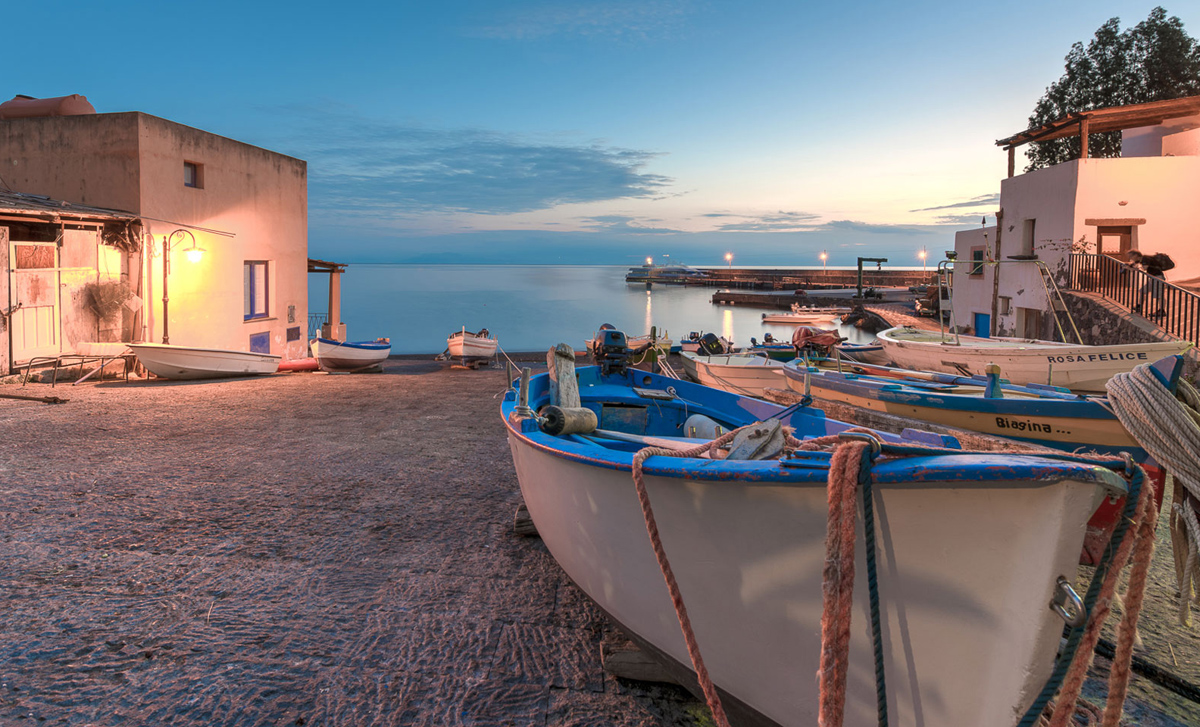
Day 6, Stromboli-Salina, 20 miles
The following day we leave for Salina, 20 miles away. It is the greenest of all the Aeolian islands and famous for its seaside villages and landscape views consisting of the six volcanoes including the two highest volcanic peaks of the entire archipelago: Mount Fossa delle Felci and Mount dei Porri which are a part of a protected nature reserve. The name Salina comes from a lake located in the hamlet of Lingua, from which salt was obrained. There are two possible anchorages: S. Marina di Salina on the east side and Rinella on the south side. The first is the most important stopover place on the island, at the foot of the main town. It is divided into two docks, but it is possible to anchor just outside the port on a depth of 7-15 m. This is an excellent shelter with winds from the West. Rinella, on the other hand, is a natural bay transformed into a port thanks to a pier that starts from the shore and extends westwards. It is an excellent shelter from the winds of the 1st and 2nd quadrant, but exposed to the southern winds. You can moor on the quay only if no ferries are expected to arrive. Alternatively, it is possible to anchor near the beach in 4-7 m of water on a seabed of sand and algae. Here snorkelers can admire the phenomena called “sconcassi”, typical emanations of volcanic gases and vapors from the seabed.
The most beautiful beach is Baia di Pollara and also the most famous one is in the Aeolian islands chosen by Massimo Troisi as a set for Il Postino. It is accessed by a staircase, surrounded by a cliff all the way around and facing the Faraglione di Pollara. From here you can admire one of the most beautiful sunsets in the world, with Alicudi and Filicudi in the distance. You should also take some time to visit the village of Santa Marina, the small fishing village of Lingua, known for pebble beaches and a crystalline sea, and Malfa with its white houses built by a group of Amalfi people who founded a colony in this part of the island.
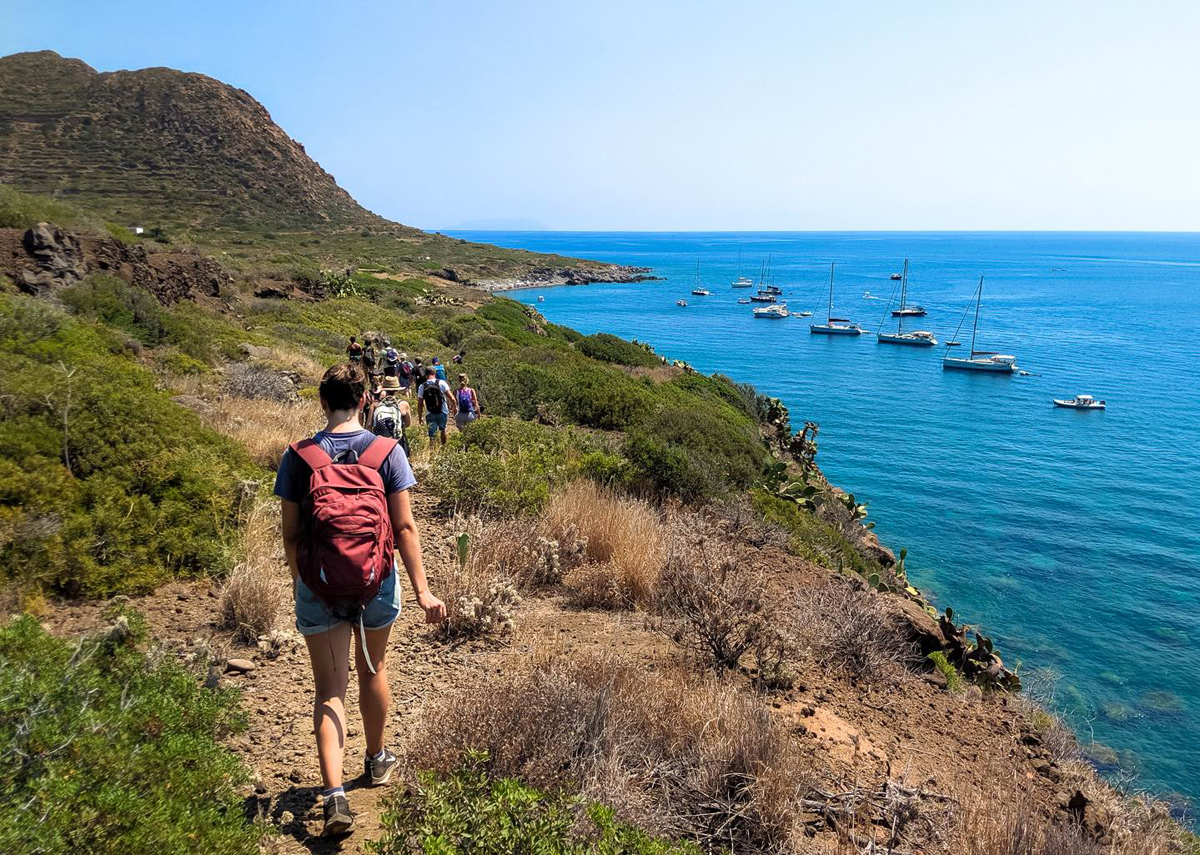
Day 7, Salina-Filicudi-Marina di Portorosa, 45 miles
It is almost time to leave this wonderful archipelago, but not before savoring its wildest, impervious and primordial soul: Filicudi. The island is located 10 miles west of Salina. A little more than an hour of sailing to reach this remnant of ancient and almost uninhabited land (150 people in winter) bathed by a bright blue sea. The coasts of Filicudi are steep, deserted and difficult to access as they are surrounded by shoals and dangerous rocks. The alternative for anchoring is in a bay on a sandy bottom in 7-10 m deep water. Some want to visit Pecorini a Mare, on the southern side and, although it is pretty amazing to see, there is no shelter, therefore to be considered only if the weather is good.
The island consists of a continuous up and down paths, mule tracks, volcanic walls and terraced lands on which almond, fig, carob and pomegranate trees alternate. The houses of Filicudi line up on the only asphalted road that connects the two seaside villages of the island, Porto on one side and Pecorini on the other side of the island. For trekking lovers, the ascent to Monte Fossa delle Felci (771 meters), as well as a visit to the ghost village of Zucco Grande are not to be missed. Another stop not to be missed is the promontory of Capo Graziano which houses the remains of an oval-shaped village from the Neolithic era. From here, you can also reach the ancient Macine quarries. And the final spot to see is the Canna di Filicudi, an imposing rock 71 meters high and the majestic “Grotta del Bue Marino”, the largest bay of the Aeolian Islands which has a small beach of volcanic pebbles at its very end.
You May Also Like
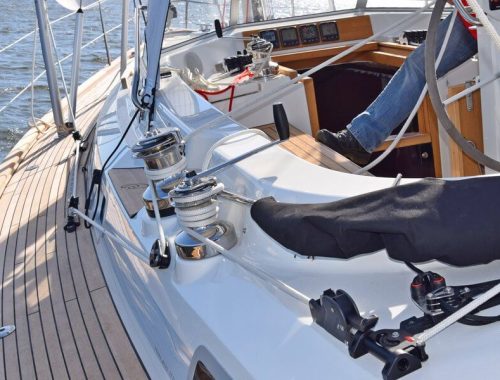
Mistakes to avoid on board
16/11/2022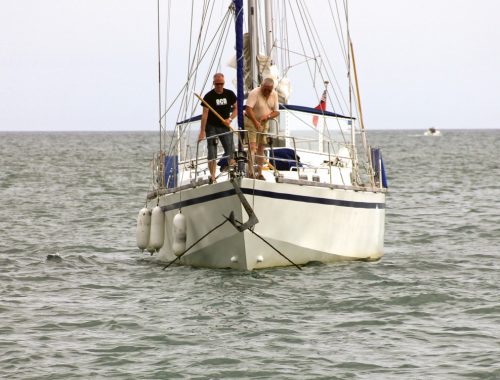
Fouled anchor in the bay: How to solve the problem
29/10/2025